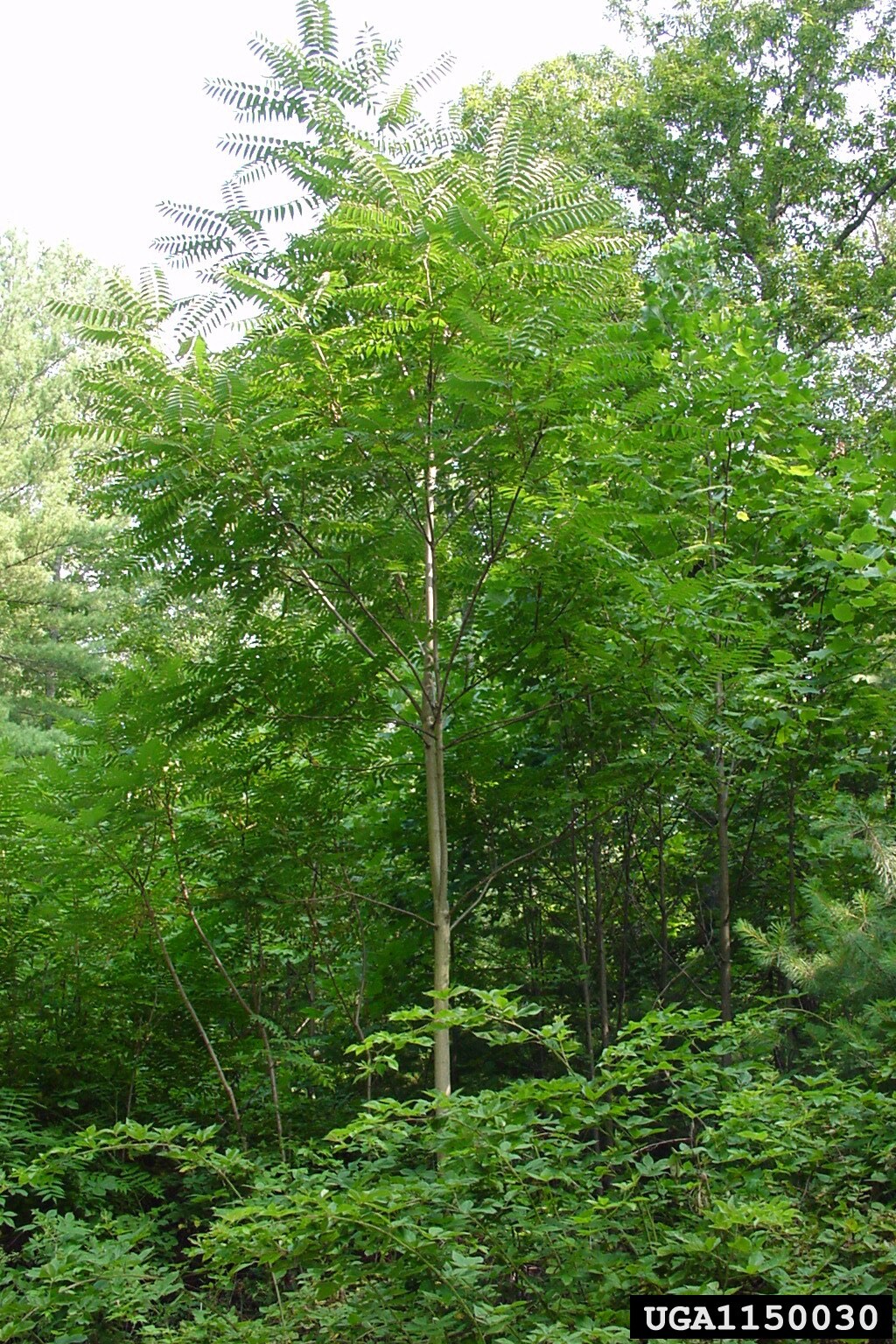|
Having trouble viewing this email? View it as a Web page.
May 31, 2023
June Weed of the Month: Tree of heaven
Tree of heaven is a fast-growing, prolific seed producer that outcompetes native plants
Monika Chandler, Minnesota Department of Agriculture
Tree of heaven (Ailanthus altissima) is a fast-growing, prolific seed producer that is a Prohibited Eradicate Noxious Weed in Minnesota. Native to China, Mongolia, Taiwan, and Tibet, it was introduced to North America as an ornamental shade tree. In urban areas, it can cause damage to sewers, pavement, and building foundations. In natural ecosystems, it can establish dense monocultures that outcompete native plants.
Tree of heaven can reach heights of 80 feet. Tree of heaven looks like staghorn sumac, ash, and walnut trees. The leaflet edges of these native trees are serrated. In comparison, the leaflet edges on tree of heaven are smooth with one or two bumps at the base of each leaflet. Tree of heaven leaves are large and compound and can be 1-4 feet in length with 11-41 leaflets. The flowers are small, yellowish-green, and arranged in large clusters at the ends of the leaves. It produces winged fruit like maple trees that hang in long clusters. The fast-growing, horizontal roots can send up new sprouts up to 90 feet from the parent stem. Tree of heaven also emits a strong, offensive odor that helps distinguish it from other plants.

|
Chuck Bargeron, University of Georgia, Bugwoood.org
|
Click here to download the photo.
Additionally, tree of heaven is a preferred host for spotted lanternfly (Lycorma delicatula), an invasive insect in North America. Spotted lanternfly is native to Asia and feeds on sap from many plants important to Minnesota, including grapevines, maples, black walnut, birch, and willow. Although it feeds on many species, it can complete its lifecycle on only a few plants, including tree of heaven and round leaf bittersweet (Celastrus orbiculatus). Round leaf bittersweet is a Prohibited Control Noxious Weed and is also native to Asia.
Both tree of heaven and round leaf bittersweet were documented in southeast Minnesota, but round leaf bittersweet is much more abundant in this area. Spotted lanternfly has not been documented in Minnesota but has been found in many Eastern states, Michigan, Indiana, and Iowa in the Midwest. It’s heading our way. Let’s be on the lookout for spotted lanternfly and its invasive host plants. For identification:
Learn more about tree of heaven and spotted lanternfly on the Minnesota Department of Agriculture’s website. Report finds of tree of heaven and spotted lanternfly to Report a Pest or call 1-888-545-6684. If you would like to join a participatory science project, check out University of Minnesota's Extension’s Terrestrial Invasive Species Projects.
MEDIA: For more information on Weed of the Month, contact Brittany Raveill, MDA Communications, at brittany.raveill@state.mn.us or 651-201-6131
|